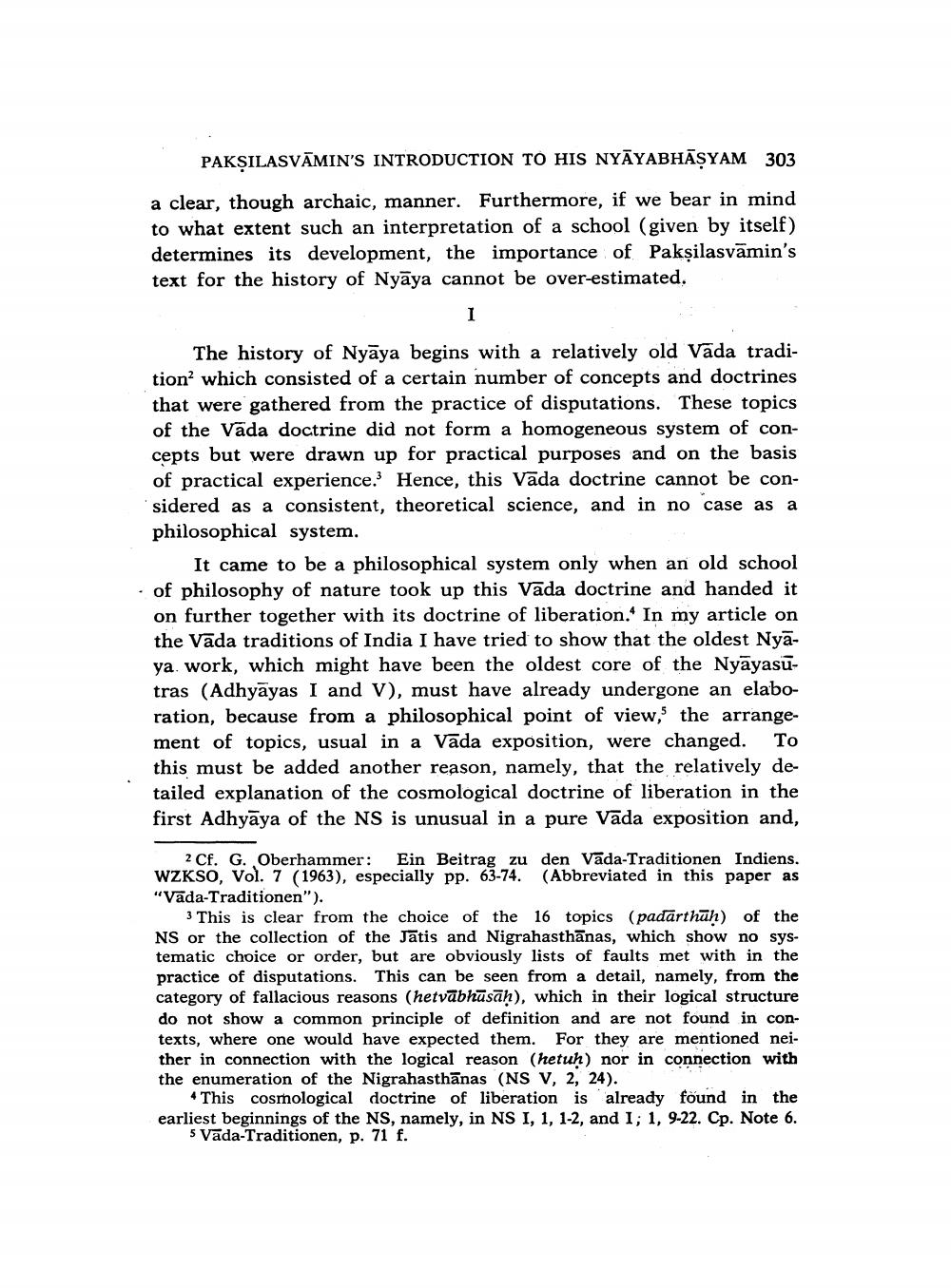Book Title: Paksilasvamins Introduction To His Nyayabhasyam Author(s): Gerhard Oberhammer Publisher: Gerhard Oberhammer View full book textPage 2
________________ PAKṢILASVĀMIN'S INTRODUCTION TO HIS NYAYABHAṢYAM 303 a clear, though archaic, manner. Furthermore, if we bear in mind to what extent such an interpretation of a school (given by itself) determines its development, the importance of Pakşilasvamin's text for the history of Nyaya cannot be over-estimated. 1 The history of Nyaya begins with a relatively old Väda tradition' which consisted of a certain number of concepts and doctrines that were gathered from the practice of disputations. These topics of the Vada doctrine did not form a homogeneous system of concepts but were drawn up for practical purposes and on the basis of practical experience. Hence, this Vada doctrine cannot be considered as a consistent, theoretical science, and in no philosophical system. It came to be a philosophical system only when an old school of philosophy of nature took up this Vada doctrine and handed it on further together with its doctrine of liberation. In my article on the Vāda traditions of India I have tried to show that the oldest Nyaya work, which might have been the oldest core of the Nyayasutras (Adhyayas I and V), must have already undergone an elabo ration, because from a philosophical point of view, the arrangement of topics, usual in a Vada exposition, were changed. Το this must be added another reason, namely, that the relatively detailed explanation of the cosmological doctrine of liberation in the first Adhyaya of the NS is unusual in a pure Vada exposition and, 2 Cf. G. Oberhammer: Ein Beitrag zu den Vada-Traditionen Indiens. WZKSO, Vol. 7 (1963), especially pp. 63-74. (Abbreviated in this paper as "Vada-Traditionen"). 3 This is clear from the choice of the 16 topics (padarthūḥ) of the NS or the collection of the Jatis and Nigrahasthānas, which show no systematic choice or order, but are obviously lists of faults met with in the practice of disputations. This can be seen from a detail, namely, from the category of fallacious reasons (hetvābhāsāḥ), which in their logical structure do not show a common principle of definition and are not found in contexts, where one would have expected them. For they are mentioned neither in connection with the logical reason (hetuḥ) nor in connection with the enumeration of the Nigrahasthānas (NS V, 2, 24). 4 This cosmological doctrine of liberation is already found in the earliest beginnings of the NS, namely, in NS I, 1, 1-2, and 1; 1, 9-22. Cp. Note 6. 5 Vada-Traditionen, p. 71 f.Page Navigation
1 2 3 4 5 6 7 8 9 10 11 12 13 14 15 16 17 18 19 20 21
